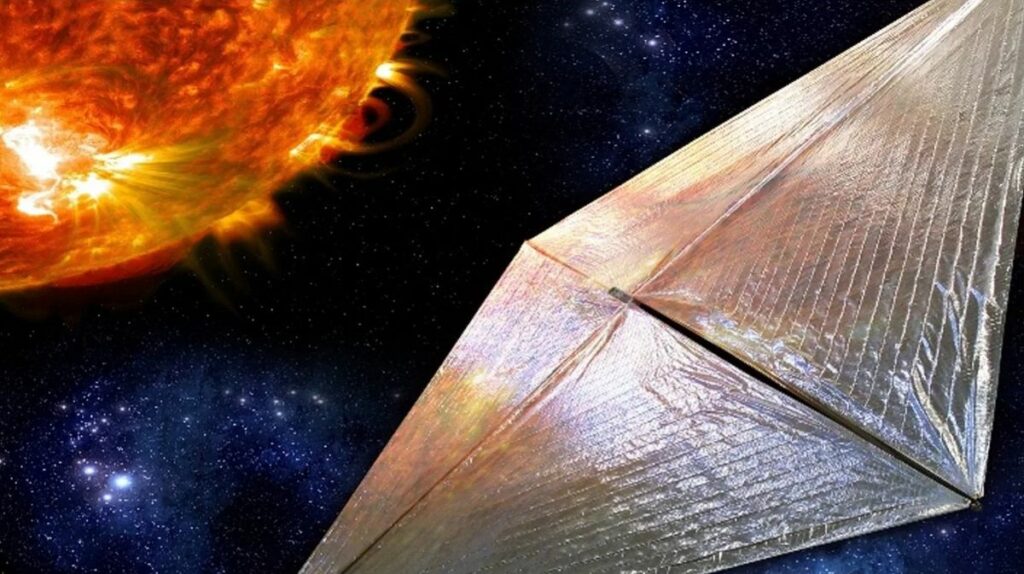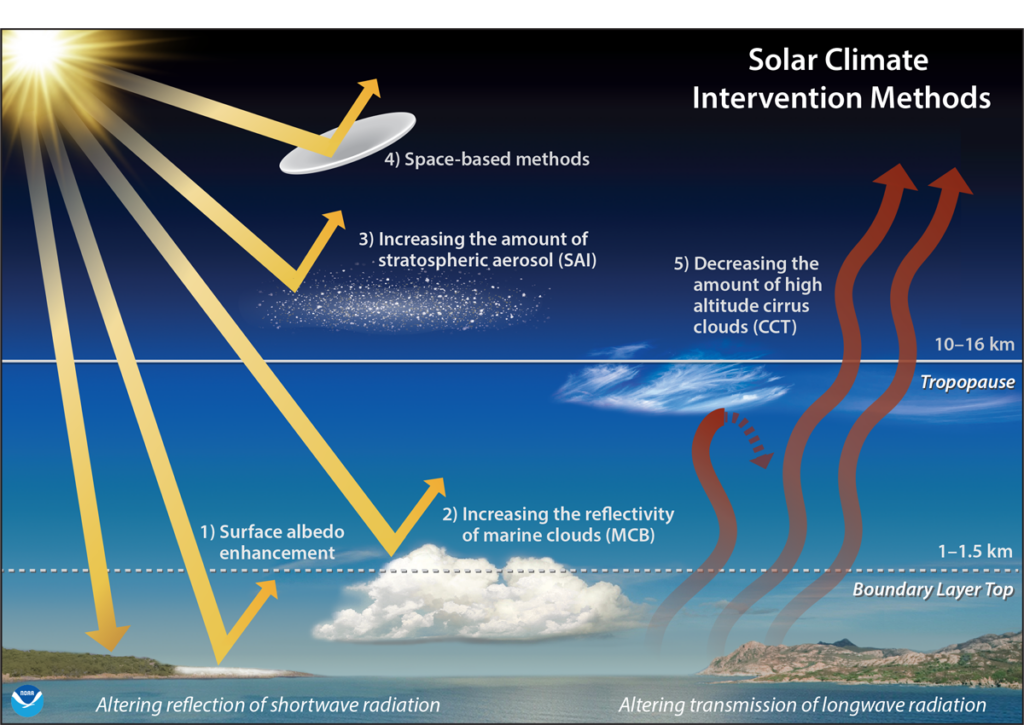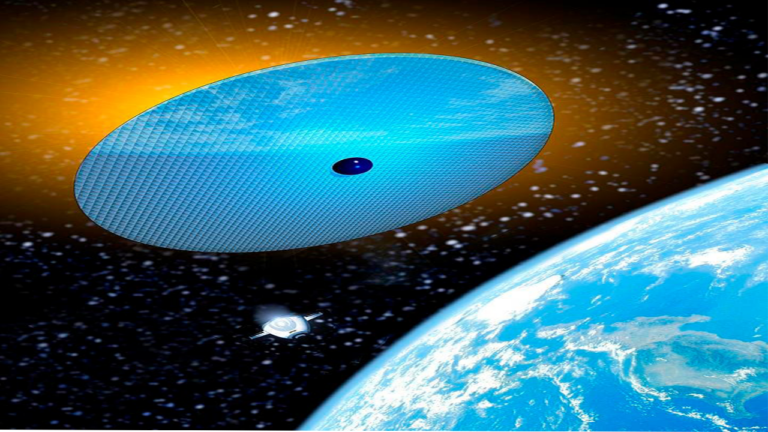Researchers Plan to Deploy Enormous Orbiting ‘Sunshade’ to Combat Climate Change
A coalition has convened to investigate and advocate for a space-deployed sunshield as a defense against worldwide climate shifts. While the notion has lingered for some time, the Planetary Sunshade Foundation is generating a stream of publications endorsing and highlighting the viability of this concept. According to the Foundation, a planetary sunshield could represent the optimal strategy for managing solar radiation and ought to be recognized as a pivotal component in the global endeavor to address the persistent climate shifts occurring on Earth.
A matter of degrees
Addressing the direst consequences of climate change hinges on three fundamental elements: curtailing emissions, extracting carbon dioxide, and managing solar radiation. An international consensus aims to cap the global temperature rise at 1.5 degrees Celsius (2.7 degrees Fahrenheit) above current averages. However, the harsh reality remains: the lower the temperature increase, the milder the climate repercussions.
Nevertheless, climate scientists have warned that our planet might breach the 1.5°C threshold within the next decade. Concurrently, there has been a surge in extreme weather events, a rise in sea levels, widespread wildfires, and the steady melting of ice caps. These distressing indicators align with mounting political pressure to counteract the impending calamity of climate change.
Livable planet
Morgan Goodwin serves as the Executive Director of the Planetary Sunshade Foundation.
When discussing the group’s motivations for undertaking this initiative, Goodwin emphasizes that while current strategies aimed at decarbonization are crucial, they alone cannot secure a sustainable future for our planet.
Decarbonization involves reducing carbon dioxide emissions by transitioning to low-carbon energy sources, thereby decreasing the release of greenhouse gases into the Earth’s atmosphere.
“To avert the most severe impacts of climate change, the global community must swiftly phase out fossil fuel usage, extract gigatons of carbon from the atmosphere, and restrict incoming solar radiation,” Goodwin explained to Space.com. Regarding methods proposed to mitigate solar radiation, Goodwin highlighted the numerous advantages of the sunshade concept, underscoring the need for investment in this approach.

Construction strategies
Described as a colossal structure in space, the sunshade is proposed to be positioned at the Sun-Earth Lagrange-1 point. Once established, its function would involve mitigating radiative forcing—the entrapment of heat within the atmosphere caused by greenhouse gas emissions—by reflecting sunlight back into space.
The foundation asserts the feasibility of constructing a Planetary Sunshade, leveraging early solar sail technology that has already been tested in space. “The swift advancements in space launch systems have led to a rapid decrease in the cost of transporting materials and individuals into space, expanding the realm of achievable possibilities.”
As outlined by the foundation, there exist two potential strategies for constructing the sunshade. “We are actively pursuing both avenues and believe that if a planetary sunshade comes to fruition, the initial construction phases will rely on Earth-launched infrastructure, while subsequent phases will harness space-based resources and in-orbit construction,” the group’s website details.

Hands-off Mother Nature?
However, there are individuals who strongly advocate the notion: “You shouldn’t tamper with Mother Nature!”
In response, Goodwin highlights that humanity is significantly altering Mother Nature through large-scale industrial activities that are often sanctioned or subsidized by governments.
“Our civilization’s continuation hinges on our capacity to judiciously and purposefully alter our interactions with the planet,” emphasized Goodwin.
Indeed, over the past year, Goodwin noted that the White House released a congressionally mandated report on pathways for governing geoengineering—an initiative he sees as “a modest yet significant stride” toward establishing a framework for increased investment in geoengineering research.

Report takeaways
In June of this year, the White House Office of Science and Technology Policy issued the mandated report on solar radiation modification as required by Congress.
Regarding the insights from the report, it emphasizes the necessity for any potential thorough research program to encompass both the societal and scientific dimensions of solar radiation modification.
The document highlights several critical areas that demand further investigation in solar radiation modification research. These areas include assessing the environmental and climatic impacts of deploying solar radiation modification, evaluating potential societal consequences and ecological effects, and exploring collaborative international approaches to conducting this research.
Furthermore, the report acknowledges the fragmented and spontaneous nature of past research on the impacts of solar radiation modification. It notes that this approach lacks a comprehensive strategy, resulting in significant knowledge gaps and uncertainties in various crucial domains.
Uncertainties, risks, challenges
Earlier this year, the Climate Overshoot Commission, also known as the Global Commission on Governing Risks from Climate Overshoot, released its report. This independent assembly of global leaders proposed a strategy to mitigate risks in case global warming surpasses the 1.5°C threshold, termed as a “climate overshoot.”
Within the commission’s report, they explored various Solar Radiation Modification (SRM) techniques, including space-based reflectors, stratospheric aerosol injection, cirrus cloud thinning, and marine cloud brightening.
However, the study highlighted that SRM approaches would offer an imperfect counter to climate change and bring forth significant uncertainties, risks, and governance challenges. The report emphasized acute governance gaps for SRM, posing questions such as how to research and evaluate these methods without diverting attention from essential greenhouse gas emission reductions. Additionally, it questioned the decision-making process and resolution of international differences regarding SRM.
Morgan Goodwin, from the Planetary Sunshade Foundation, remarked that this year is expected to conclude as the hottest year on record, surpassing previous years. “As the pace and effects of warming intensify, an array of tactics and perspectives will be introduced.”
The fate of a sun-blocking sail, an idea still under discussion, remains uncertain in these ongoing deliberations.
This article is republished from SpaceCom under a Creative Commons license. Read the original article.
Do not forget to share your opinion with us to provide you with the best posts !




0 Comments